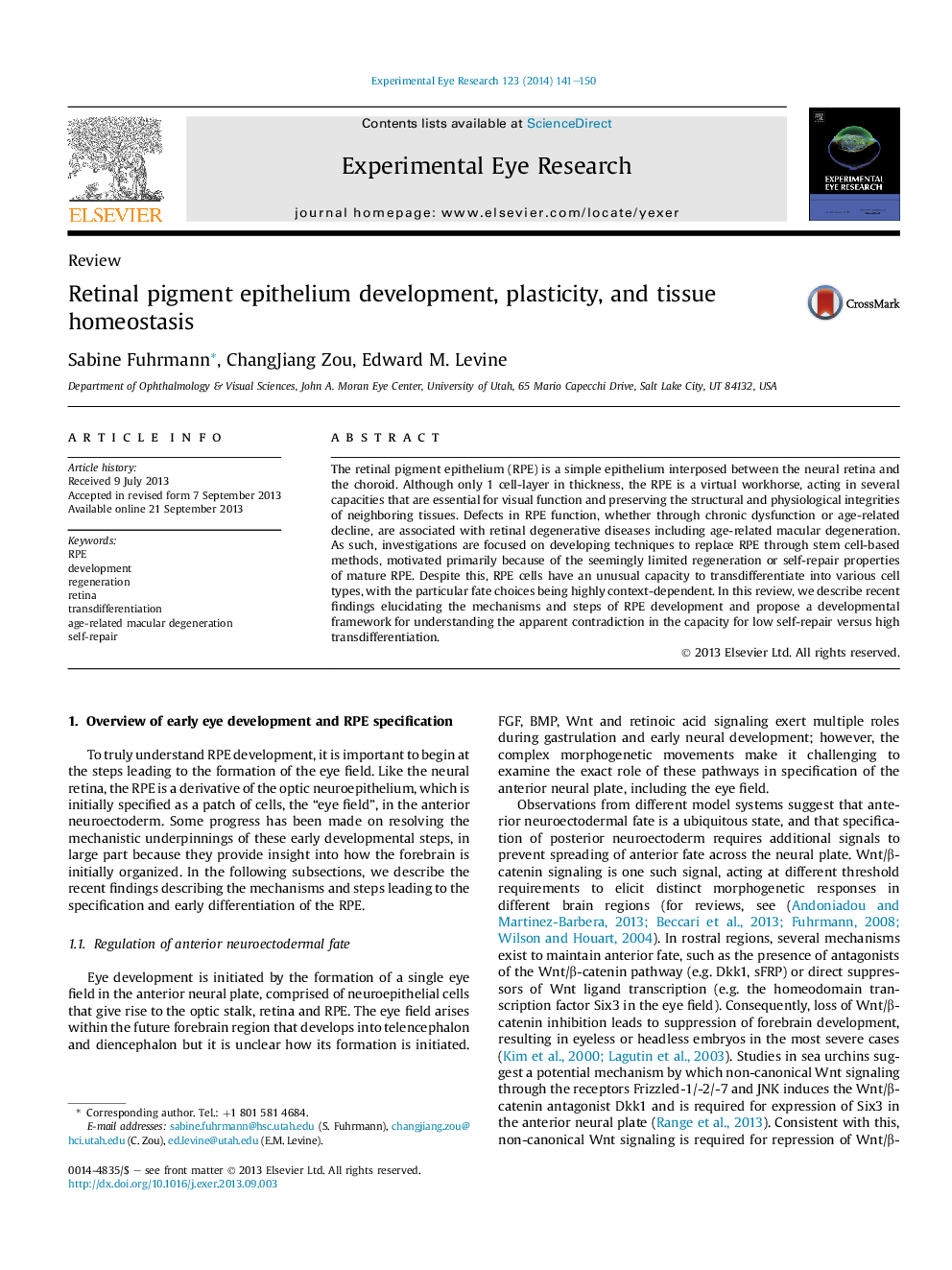| Article ID | Journal | Published Year | Pages | File Type |
|---|---|---|---|---|
| 6196905 | Experimental Eye Research | 2014 | 10 Pages |
â¢Update of early eye development and RPE specification.â¢Limitations in RPE transdifferentiation activity.â¢Regeneration and self-repair in the mature RPE.
The retinal pigment epithelium (RPE) is a simple epithelium interposed between the neural retina and the choroid. Although only 1 cell-layer in thickness, the RPE is a virtual workhorse, acting in several capacities that are essential for visual function and preserving the structural and physiological integrities of neighboring tissues. Defects in RPE function, whether through chronic dysfunction or age-related decline, are associated with retinal degenerative diseases including age-related macular degeneration. As such, investigations are focused on developing techniques to replace RPE through stem cell-based methods, motivated primarily because of the seemingly limited regeneration or self-repair properties of mature RPE. Despite this, RPE cells have an unusual capacity to transdifferentiate into various cell types, with the particular fate choices being highly context-dependent. In this review, we describe recent findings elucidating the mechanisms and steps of RPE development and propose a developmental framework for understanding the apparent contradiction in the capacity for low self-repair versus high transdifferentiation.
